
How to Use MCP3008 8-channel 10-bit ADC: Examples, Pinouts, and Specs
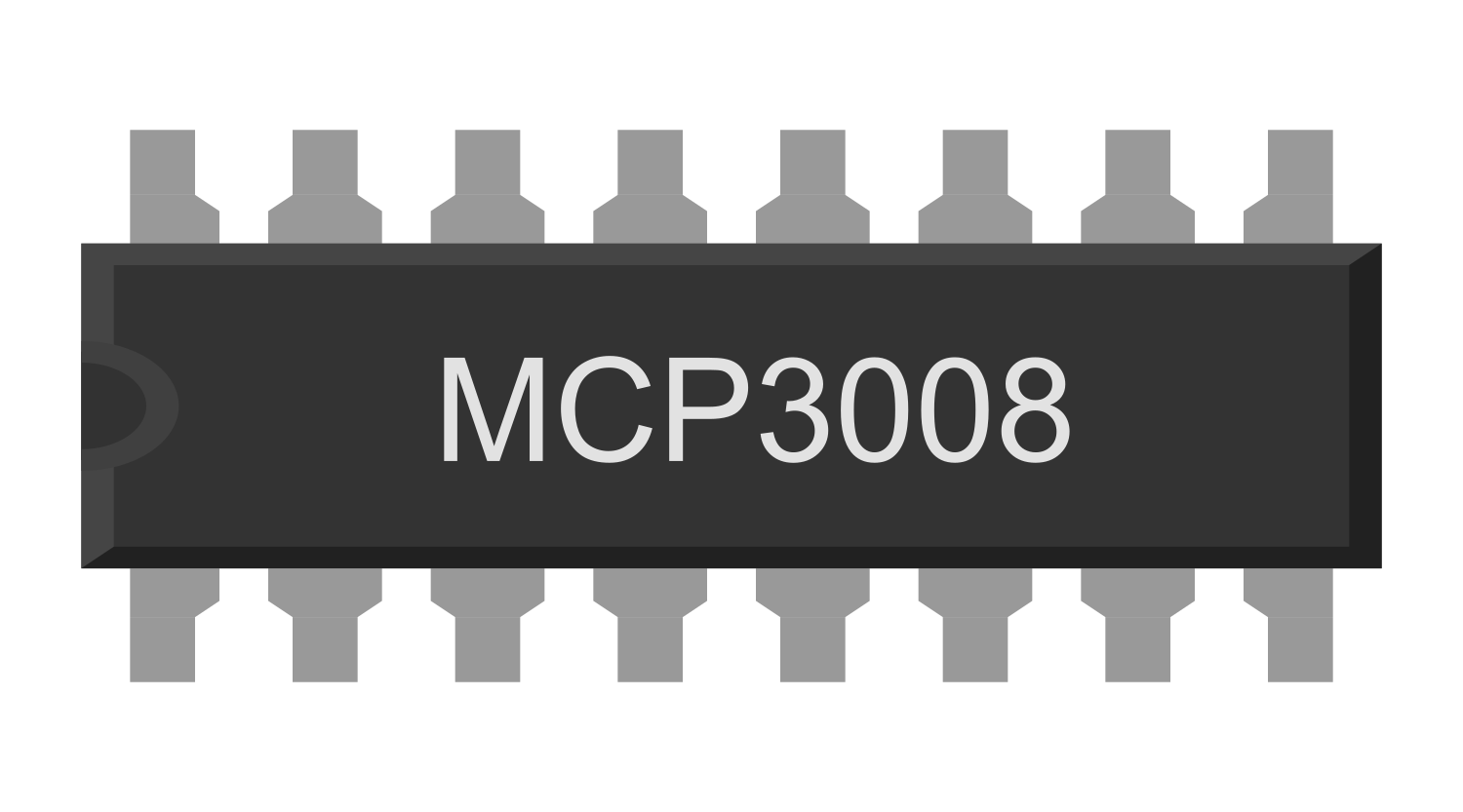
 Design with MCP3008 8-channel 10-bit ADC in Cirkit Designer
Design with MCP3008 8-channel 10-bit ADC in Cirkit DesignerIntroduction
The MCP3008 is an 8-channel, 10-bit analog-to-digital converter (ADC) that allows for the conversion of analog signals into digital data. It communicates via the Serial Peripheral Interface (SPI), making it ideal for microcontroller applications where multiple analog inputs are required. This component is widely used in projects involving sensors, potentiometers, and other analog devices.
Explore Projects Built with MCP3008 8-channel 10-bit ADC
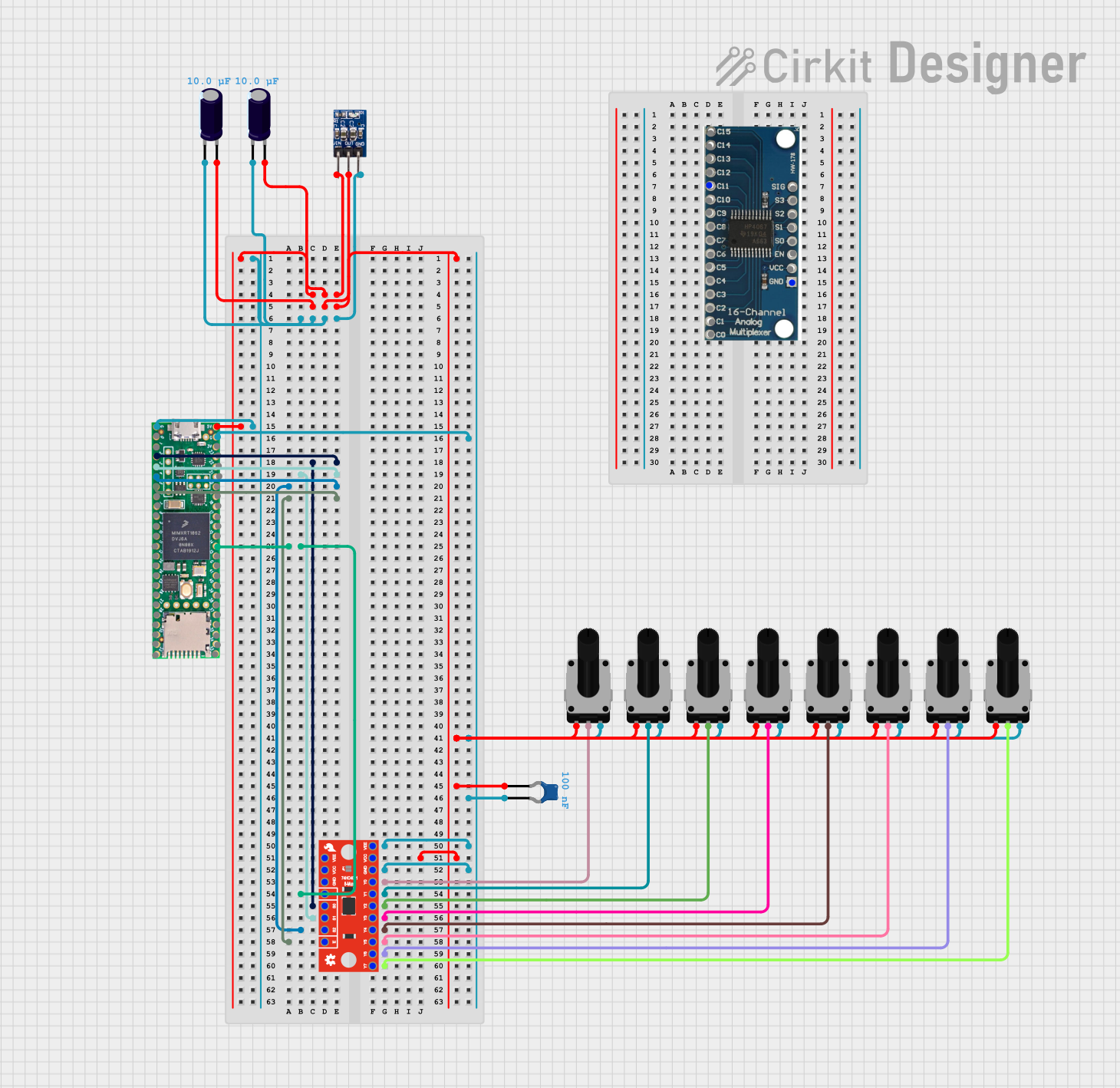
 Open Project in Cirkit Designer
Open Project in Cirkit Designer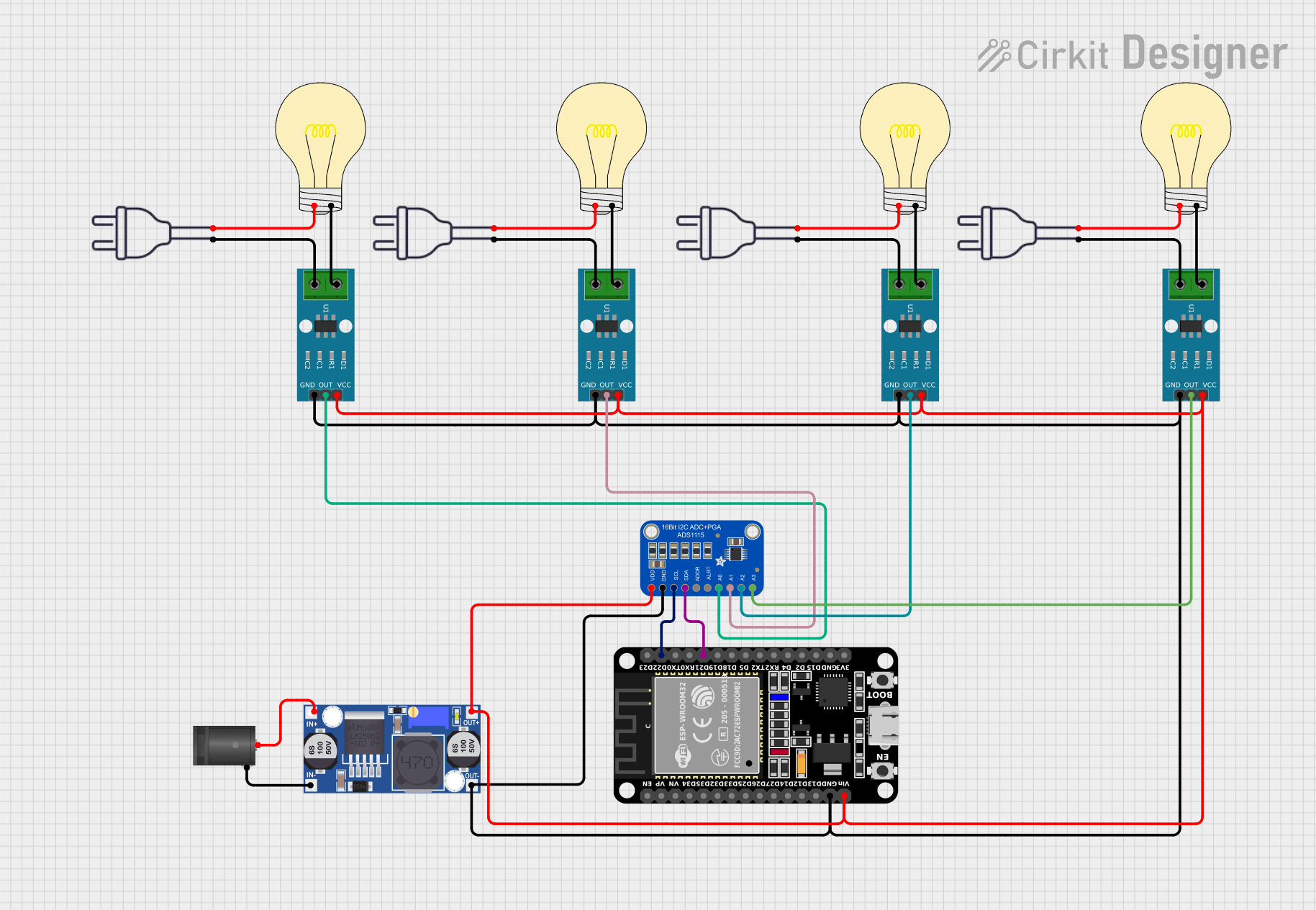
 Open Project in Cirkit Designer
Open Project in Cirkit Designer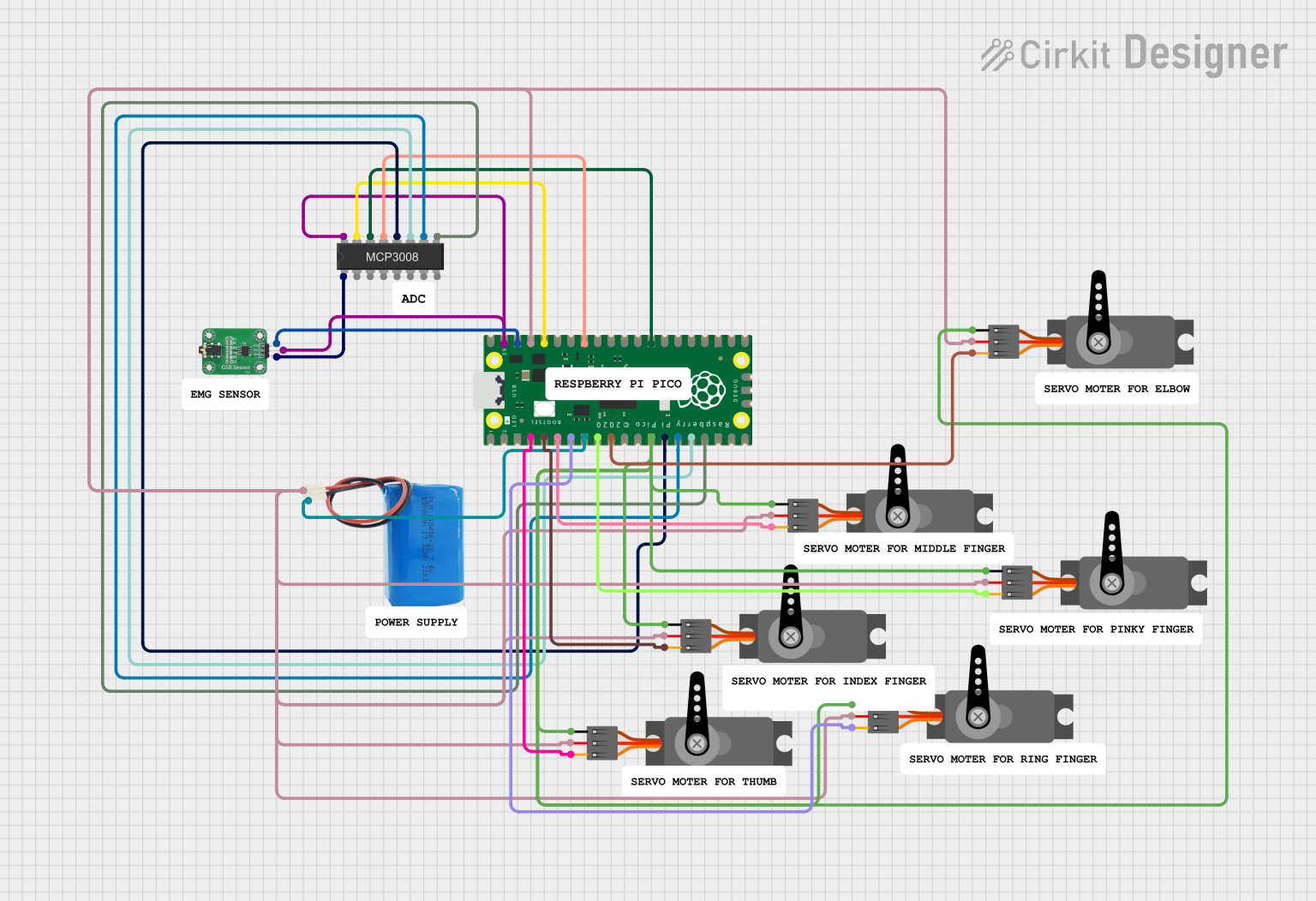
 Open Project in Cirkit Designer
Open Project in Cirkit Designer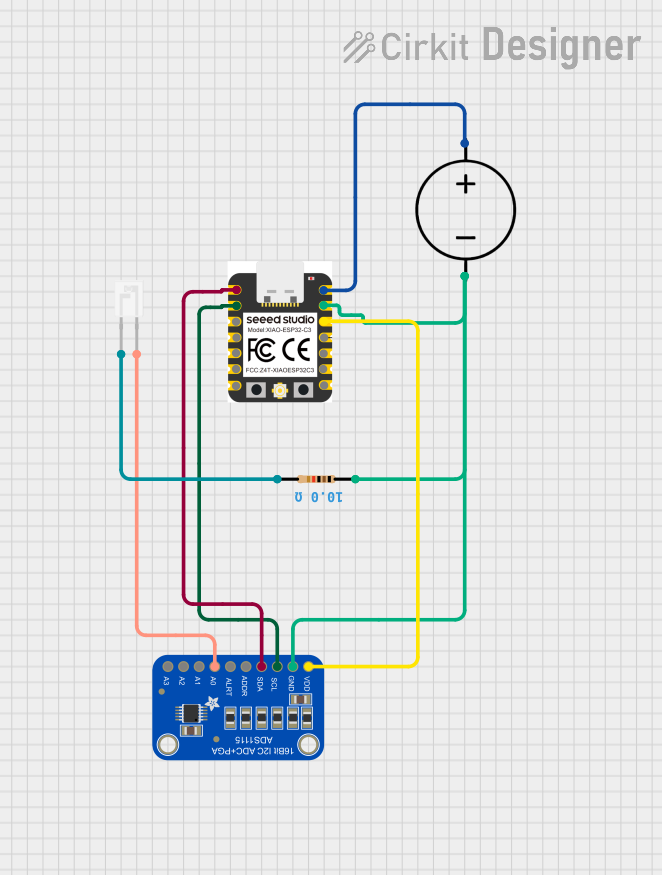
 Open Project in Cirkit Designer
Open Project in Cirkit DesignerExplore Projects Built with MCP3008 8-channel 10-bit ADC

 Open Project in Cirkit Designer
Open Project in Cirkit Designer
 Open Project in Cirkit Designer
Open Project in Cirkit Designer
 Open Project in Cirkit Designer
Open Project in Cirkit Designer
 Open Project in Cirkit Designer
Open Project in Cirkit DesignerCommon Applications and Use Cases
- Reading multiple analog sensors in microcontroller projects
- Interfacing with Raspberry Pi or Arduino for analog signal processing
- Data acquisition systems
- Robotics and automation
- Environmental monitoring (e.g., temperature, humidity, or light sensors)
Technical Specifications
The MCP3008 is a versatile ADC with the following key specifications:
| Parameter | Value |
|---|---|
| Resolution | 10 bits |
| Number of Channels | 8 |
| Interface | SPI (Serial Peripheral Interface) |
| Input Voltage Range | 0V to VREF (typically 5V or 3.3V) |
| Supply Voltage (VDD) | 2.7V to 5.5V |
| Maximum Sampling Rate | 200 ksps (at 5V) |
| Power Consumption | 5 mW (typical at 5V) |
| Package Types | PDIP, SOIC, TSSOP |
Pin Configuration and Descriptions
The MCP3008 has 16 pins, as described in the table below:
| Pin Number | Pin Name | Description |
|---|---|---|
| 1 | CH0 | Analog input channel 0 |
| 2 | CH1 | Analog input channel 1 |
| 3 | CH2 | Analog input channel 2 |
| 4 | CH3 | Analog input channel 3 |
| 5 | CH4 | Analog input channel 4 |
| 6 | CH5 | Analog input channel 5 |
| 7 | CH6 | Analog input channel 6 |
| 8 | CH7 | Analog input channel 7 |
| 9 | DGND | Digital ground |
| 10 | CS/SHDN | Chip Select / Shutdown (active low) |
| 11 | DIN | Data input (SPI MOSI) |
| 12 | DOUT | Data output (SPI MISO) |
| 13 | CLK | Clock input (SPI SCK) |
| 14 | AGND | Analog ground |
| 15 | VREF | Reference voltage for ADC (sets the input voltage range) |
| 16 | VDD | Positive supply voltage |
Usage Instructions
How to Use the MCP3008 in a Circuit
- Power the MCP3008: Connect the VDD pin to a 3.3V or 5V power source, and connect the AGND and DGND pins to ground.
- Set the Reference Voltage: Connect the VREF pin to the desired reference voltage (e.g., 3.3V or 5V). This determines the maximum input voltage for the ADC.
- Connect Analog Inputs: Attach your analog sensors or devices to the CH0–CH7 pins.
- SPI Communication: Connect the SPI pins (CS/SHDN, DIN, DOUT, CLK) to the corresponding SPI pins on your microcontroller or development board.
- CS/SHDN: Chip Select (active low)
- DIN: Data input (MOSI)
- DOUT: Data output (MISO)
- CLK: Clock signal
- Write Code: Use your microcontroller's SPI library to communicate with the MCP3008 and read the digital values corresponding to the analog inputs.
Important Considerations and Best Practices
- Ensure that the reference voltage (VREF) matches the voltage range of your analog signals.
- Use decoupling capacitors (e.g., 0.1 µF) near the VDD and VREF pins to reduce noise.
- Keep the SPI clock frequency within the MCP3008's specifications to ensure reliable communication.
- Avoid leaving unused analog input channels floating; connect them to ground if not in use.
Example: Connecting MCP3008 to Arduino UNO
Below is an example of how to connect and use the MCP3008 with an Arduino UNO to read an analog sensor on channel 0.
Circuit Connections
- MCP3008 VDD → 5V (Arduino)
- MCP3008 AGND, DGND → GND (Arduino)
- MCP3008 VREF → 5V (Arduino)
- MCP3008 CS/SHDN → Pin 10 (Arduino)
- MCP3008 DIN → Pin 11 (Arduino MOSI)
- MCP3008 DOUT → Pin 12 (Arduino MISO)
- MCP3008 CLK → Pin 13 (Arduino SCK)
- Analog sensor → CH0 (MCP3008)
Arduino Code
#include <SPI.h>
// Define MCP3008 pins
const int CS_PIN = 10; // Chip Select pin for MCP3008
void setup() {
Serial.begin(9600); // Initialize serial communication
SPI.begin(); // Initialize SPI communication
pinMode(CS_PIN, OUTPUT); // Set CS pin as output
digitalWrite(CS_PIN, HIGH); // Set CS pin high (inactive)
}
int readMCP3008(int channel) {
// Ensure the channel is valid (0-7)
if (channel < 0 || channel > 7) return -1;
// Start SPI communication with MCP3008
digitalWrite(CS_PIN, LOW);
// Send start bit, single-ended mode, and channel number
byte command = 0b00000001; // Start bit
byte config = (0b1000 | channel) << 4; // Single-ended mode + channel
SPI.transfer(command); // Send start bit
byte highByte = SPI.transfer(config); // Send config and receive high byte
byte lowByte = SPI.transfer(0x00); // Receive low byte
// End SPI communication
digitalWrite(CS_PIN, HIGH);
// Combine high and low bytes into a 10-bit result
int result = ((highByte & 0x03) << 8) | lowByte;
return result;
}
void loop() {
int value = readMCP3008(0); // Read channel 0
Serial.print("Analog Value (CH0): ");
Serial.println(value); // Print the 10-bit ADC value
delay(500); // Wait 500ms before the next reading
}
Troubleshooting and FAQs
Common Issues
No Data or Incorrect Readings
- Cause: Incorrect SPI connections or configuration.
- Solution: Double-check the wiring and ensure the SPI pins are correctly connected.
Fluctuating or Noisy Readings
- Cause: Electrical noise or floating analog inputs.
- Solution: Use decoupling capacitors and ensure unused channels are grounded.
Low Resolution or Clipped Values
- Cause: Mismatch between VREF and the input signal range.
- Solution: Adjust the reference voltage to match the input signal range.
FAQs
Q: Can the MCP3008 work with 3.3V systems?
A: Yes, the MCP3008 is compatible with 3.3V systems. Ensure that VDD, VREF, and the SPI logic levels are all 3.3V.
Q: What is the maximum sampling rate of the MCP3008?
A: The maximum sampling rate is 200 ksps at 5V. At lower supply voltages, the sampling rate decreases.
Q: Can I use all 8 channels simultaneously?
A: The MCP3008 can read one channel at a time, but you can switch between channels quickly using SPI commands.